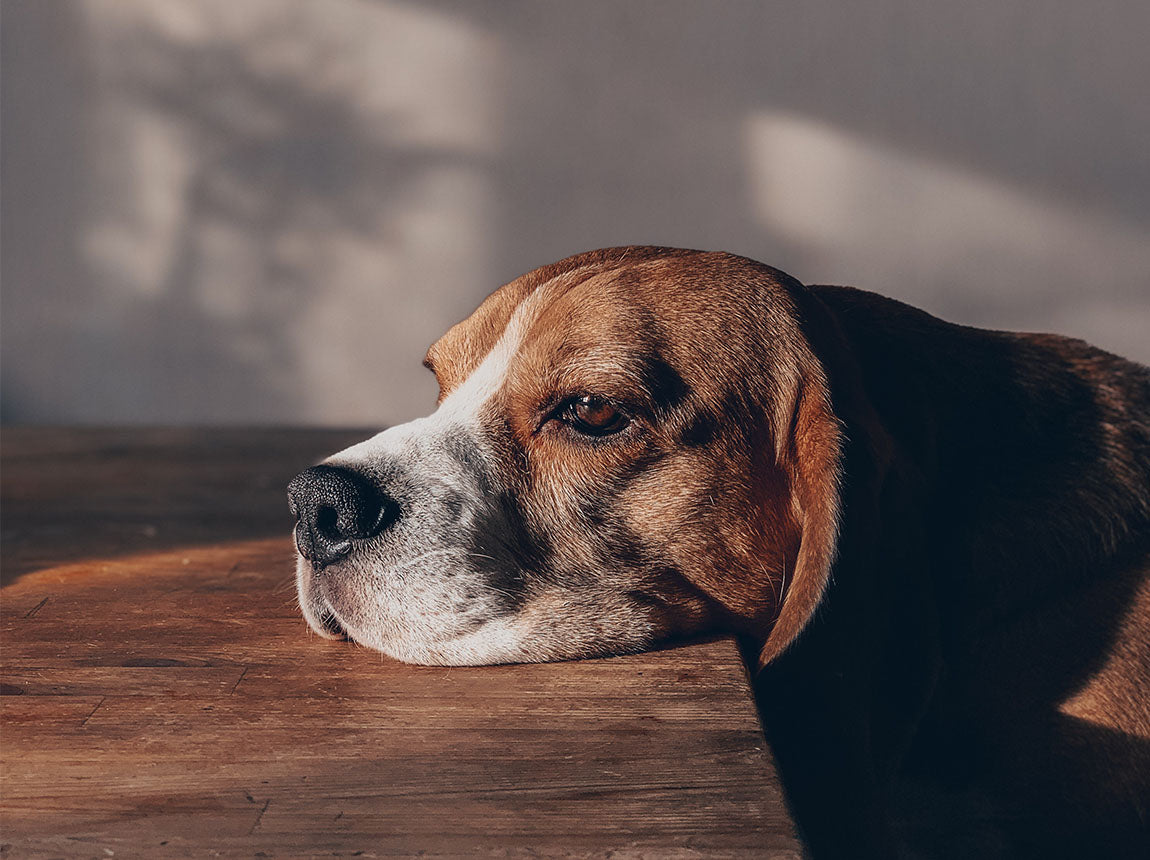Returning to the Office? How to Help Your Dog Adjust
Dogs and their families have had it good during lockdown. Dogs are easily pleased; they're happy as long as they get to be with their people. So having the owner at home during the pandemic has been ideal for them. All the time they have had company from their owners, dogs could not have asked for a happier or safer pet home!
So what happens when people need to go back to work in an office and leave their dogs home alone?

Separation Anxiety
Dogs are pack animals, and that means they're happiest when they're within their family. When they have not been properly acclimatised to spending time alone, being left for long periods can be very stressful for them, leading to an unhappy dog.
Signs of Separation Anxiety
Do you know how to spot the signs of separation anxiety? Try asking your neighbour if your dog is barking or howling when left alone. You can also look out for destructive behaviour like chewing the furniture or scratching up the carpet. If you find he has urinated or defecated inside the house - particularly on your shoes or bed - then he is almost certainly suffering from anxiousness about being left alone.
You might want to know whether your dog is resting happily or pacing nervously while you're away from the house. To see what's happening when you're not there, you could try a home CCTV camera or a dog GPS tracker, which is a cost-effect way to track his movements in real time via an app on your phone.
If your dog has become overly dependent on you during the pandemic, here are some ways you can help to prepare them for when you're not there all the time.

How to Avoid Separation Anxiety
Preparing your pooch for spending time alone is a gradual process, so the sooner you start the more effective it will be, and you will have a more content and safer pet.
- Start as soon as possible, and gradually build up the time you leave him alone.
- Be sure to leave him with interesting toys and things to chew while you're out. It helps to rotate them so that they are not the same everyday.
- Make sure you don't leave him alone too long. This is important during the building up phase so that you don't trigger anxiety. It's also important on a daily basis once you have returned to the office, as he will need to relieve himself after a few hours.
- Get help if you need it. Your dog shouldn't spend stretches of more than 4 or 5 hours alone during the day. So if you can't be there, then you should enlist the help of a dog walker, friend or family member who can commit to helping regularly.
3 Ways to Help Your Dog Cope with Your Return to the Office
The key to making sure your dog is happy when the time comes for you to go back to the office is to make it normal and easy for them to be alone. Follow these three important rules to help make the transition as stress-free as possible for you both.
- Start by leaving for just a few minutes two or three times every day. Dogs have a finely-tuned sense of routine, so it helps if you can coincide these periods with the time that you would normally go to work. Gradually build up the time that you're away until you can leave him for three or four hours.
- Make sure your dog is tired when you leave him alone. Take him for a long walk with plenty of opportunity to relieve himself and do lots of sniffing. When you get back home, feed him and then leave. After a satisfying walk, and with a full belly, it's an ideal time for him to curl up for a long snooze.
- Keep it casual. Don't make a big deal of leaving your dog, and don't make a big deal about returning. Just come and go as a normal, unremarkable routine that your dog doesn't need to get excited about. If you're excited or anxious, then he will certainly pick up on that, so maintain a relaxed attitude to indicate to him that he can relax too.
Dog Walkers and Doggy Day Care
You'll find that if you take it step by step, your dog will adjust to spending time alone. But if you can't get back after a few hours, then you'll need some outside assistance.
Doggy day care is perfect for ensuring he doesn't have to be alone too long. You can book them in for one day a week or several, depending on your needs. Another good solution is a professional dog walker who will come to your home and take your friend out in the middle of the day, ideal for topping up their exercise and some additional social interaction.
So that you can monitor how much exercise they're getting while you're at work, try having their collar fitted with a GPS tracker for dogs, like the one from Safer Pet. The extra exercise will help too, because after all, a tired dog is a happy dog.

